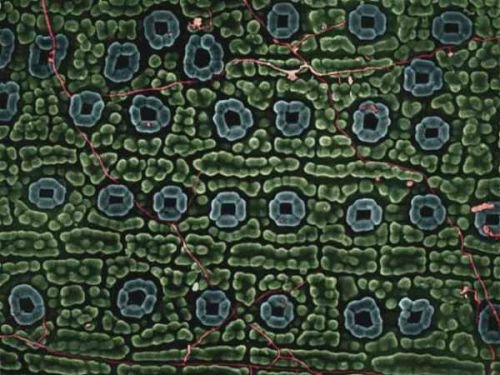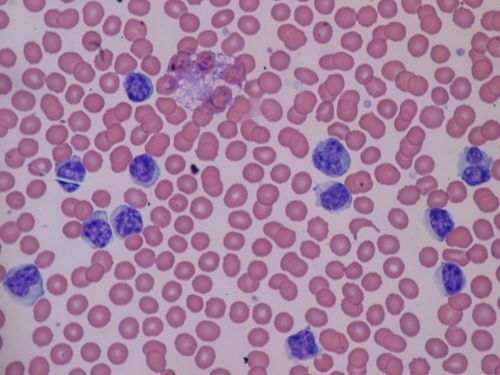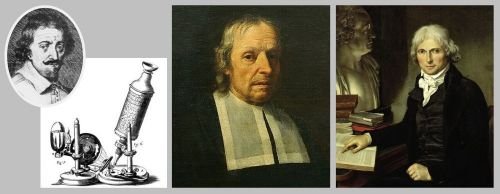Histology: What is it, History, Methods, Branches
Histology
What is histology?
Histology is a branch of biology that studies the organic tissues of animals and plants in their microscopic aspects: characteristics, composition, structure and function. For this reason, its fundamental tool is the microscope.
The word histology comes from the Greek histós which means 'tissue', 'pole' or 'rod' (in the sense of "standing"). It includes the suffix logia , which means 'study or science'. Therefore, histology studies the minimal structures that make up the organisms of living beings.
The applications of histology cover related sciences and fields as diverse as anatomy, medicine, immunology, pathology, physiology, cytology, nutrition, biochemistry, genetics, forensic research, agriculture and archeology, among others.
Branches of histology
Within histology, two fundamental branches are known: plant and animal histology.
Plant histology

View of plant tissue under the microscope. Stoma detail.
Plant histology deals with the analysis of plants, that is, living beings that belong to the plant kingdom. Plant histology comprises the study of two fundamental tissues:
- meristematic tissues (growth tissues), which include primary and secondary tissues;
- adult tissues , including parenchymal, supporting, protective, secretory, and conductive tissues.
Animal histology
 View of human tissue under the microscope. Blood sample (lymphocyte detail).
View of human tissue under the microscope. Blood sample (lymphocyte detail).
Animal histology studies metazoans, that is, living animal beings.
The human histology is included in the histology of the animals, as from the biological point of view humans are part of the animal kingdom. However, it constitutes a specific area of interest as far as health is concerned.
Animal histology includes the study of the following tissues:
- connective or connective tissue , which brings together the varieties of cartilage tissue, bone tissue, adipose tissue and blood;
- epithelial tissue , which is the tissue that lines the surfaces of the body;
- muscle tissue , made up of cells that use chemical energy to generate movement;
- nervous tissue , which refers to the neurons that transmit useful information to the body.
Histological method
The histological process refers to the techniques of histology necessary to study tissues. It is based on a series of elementary steps.
- Introduction , in which the tissue is obtained (for example, by means of a biopsy).
- Fixation , a process that aims to preserve the characteristics of the fabric through various techniques.
- Inclusion , method to harden the tissue in order to facilitate the cuts for the study by sections.
- Cutting , refers to the process of cutting hardened tissues, which are carried out with the help of a device called a microtome .
- Staining : is a process that increases contrast through staining, since under the microscope, many tissues are colorless.
- Observation : refers to the observation and analysis process carried out by the specialist through the microscope, from which conclusions can be drawn.
History of histology
 From left Right: the first microscope and its inventor Zaccharias Janssen; Marcello Malpighi and Xavier Bichat.
From left Right: the first microscope and its inventor Zaccharias Janssen; Marcello Malpighi and Xavier Bichat.
Marcello Malpighi (1628-1694), researcher at the Academia del Cimento, Florence, was considered the father of histology because he analyzed tissues using the microscope for the first time, invented in the 16th century by Zaccharias Janssen. At the same time, Robert Hooke would do the same and manage to identify the existence of cells for the first time.
The microscope was improved in the 17th century by Anton van Leeuwenhoek, who achieved a magnification of 500x, thanks to which he was able to distinguish two different types of cells: prokaryotic and eukaryotic.
Modern histology
In the 18th century, MF Xavier Bichat was designated the father of modern histology, as he was able to classify tissues and identify the microscopic origin of diseases.
In the 19th century, the recognition of the cell as the minimum unit of living beings (H. Dutrochet, JP Müller and PJ François Turpin) and as a structural and functional unit of organisms (FT Schwann and M. Schleiden) was essential.
In the 20th century, 1931, Erns Ruska invented the 5000x magnification electron microscope, which expanded histology to higher levels.
Importance of histology
Histology is of vital importance to understand the functioning of living organisms, which has repercussions on medical and scientific research in general and even on the economy.
For example,
- Identify pathologies that affect health, either through pathogens (viruses and bacteria) as well as through imbalances in the body such as diabetes, high cholesterol, hemophilia, anemia, leukocytosis, etc.
- It allows to explore hypotheses, identify problems and solutions through tissue culture.
- It promotes the development of agriculture.
- Collaborate in criminal investigation processes.
- Provides specialized information for archaeological research.
Recommended content
- 10 Characteristics of Self-Esteem
- 10 Characteristics of an Autobiography
- 10 Characteristics of the Autarchy
- 36 types of communication › What is it, Characteristics, Verbal, Non-verbal
- 5 examples of social equality
- 50 examples of hyperbole › What is it, Characteristics, Poetry and Narrative
- 6 differences between physical and moral person › What is it, Physical and Moral Characteristics
- 61 analogy examples › What is, Characteristics, Metaphors
- 7 universal values for a better world
- Amphibology » What it is, Characteristics, Concepts